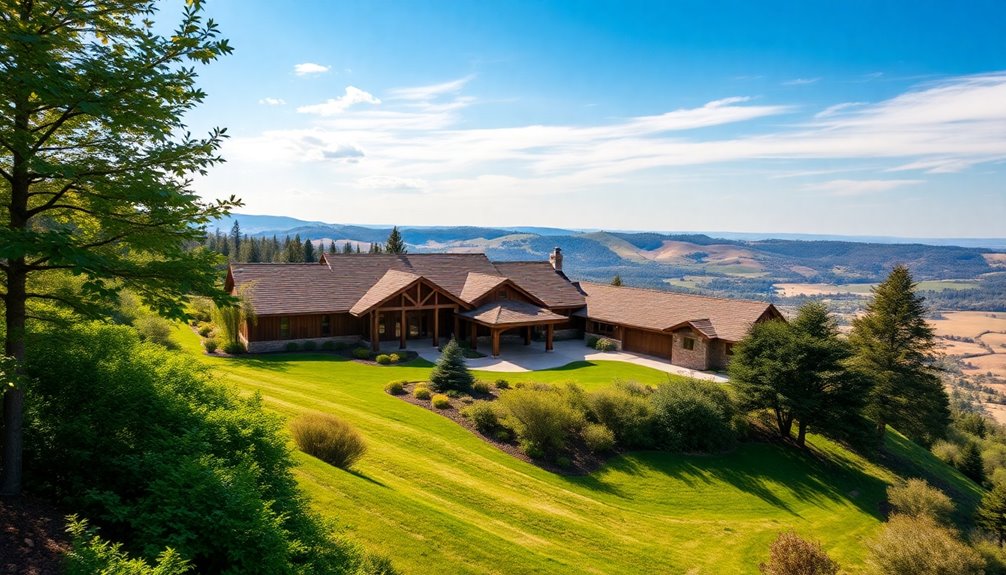Ranch homes cost more largely due to their larger footprints and the extensive land they require. Their spacious, single-story designs promote accessibility and encourage a strong connection to outdoor living, which many buyers find appealing. Additionally, construction costs increase because of the higher quality materials often used and the need for skilled labor. You also pay a premium for desirable land, as limited availability drives prices up. Upgraded amenities further enhance their value, making ranch homes a sought-after investment. If you're curious about how these factors interact, there's more to uncover.
Key Takeaways
- Ranch homes require larger land parcels, significantly increasing land acquisition costs compared to multi-story homes.
- The expansive designs of ranch homes lead to higher construction and material costs, approximately 10% more than their multi-story counterparts.
- Specialized craftsmanship and labor for larger, more complex layouts increase overall labor costs during construction.
- The demand for outdoor living spaces and amenities, like larger patios and sliding glass doors, enhances property value and desirability.
- Limited inventory and growing preferences for single-story living have driven up prices in sought-after areas.
Understanding Ranch Home Features
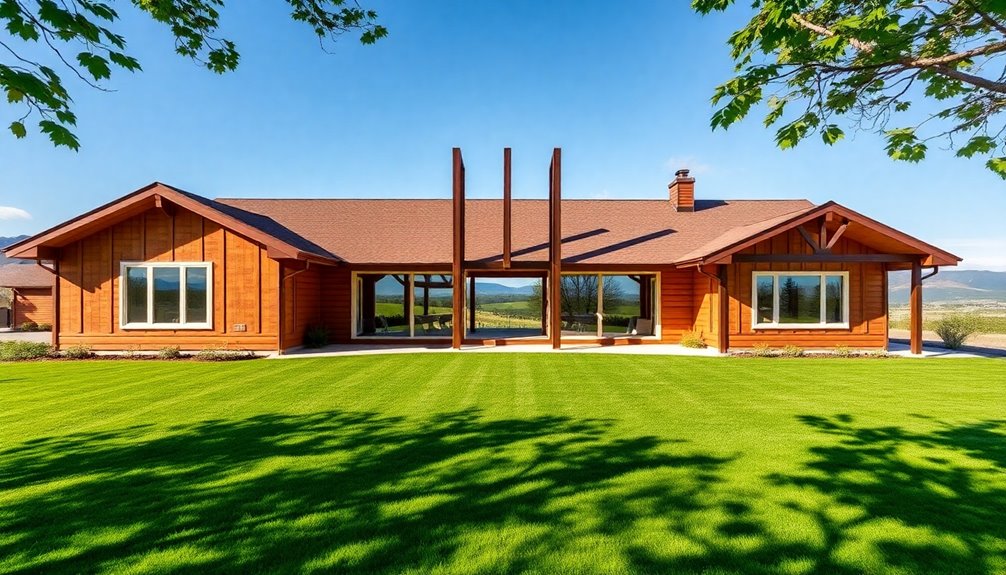
When you think about ranch homes, you might picture spacious single-level layouts that prioritize both comfort and convenience.
These ranch-style homes typically feature a larger footprint, which means they often require a larger lot size compared to multi-story houses. This expansive design not only enhances living space but also leads to increased material and construction costs.
With open floor plans and larger windows, ranch homes aim for aesthetic appeal, but this demands quality craftsmanship and materials.
Additionally, modern ranch homes often come equipped with upgraded amenities like gourmet kitchens and energy-efficient appliances, which can further elevate overall home value and construction expenses.
Understanding these features helps explain why ranch homes often come with a higher price tag.
The Appeal of Single-Story Living
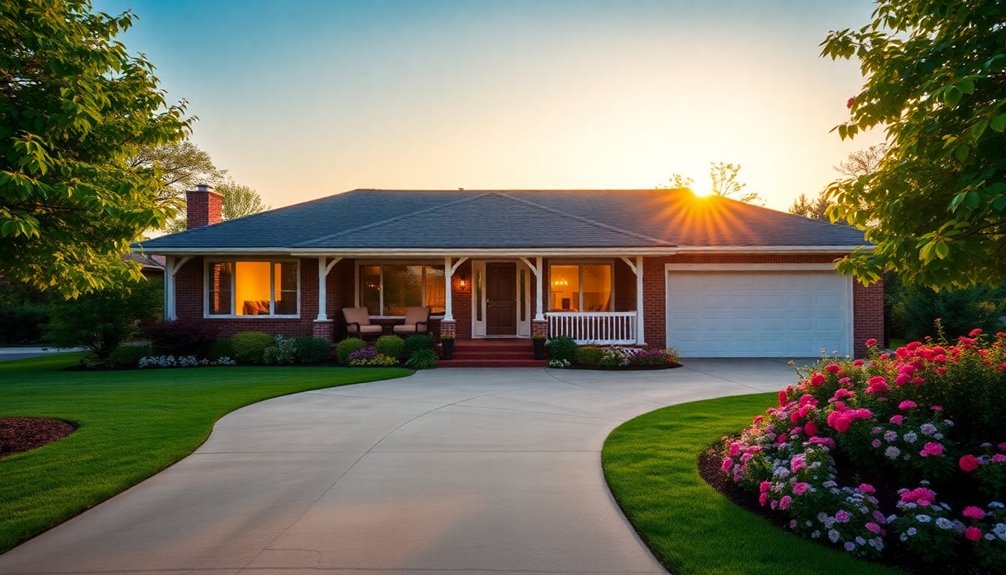
When you consider ranch homes, the single-story layout stands out for its accessibility, making life easier for everyone, from young families to retirees.
You'll also love how these homes connect indoor and outdoor spaces, encouraging a lifestyle that embraces nature.
Plus, the design allows for easy supervision of kids and pets, providing peace of mind while you enjoy your living space.
Accessibility for All Ages
Ranch homes stand out for their single-story design, making them a perfect choice for everyone, especially older adults and families with young children. Their layout offers exceptional accessibility for all ages, eliminating stairs that can pose challenges for those with mobility issues.
The open floor plans in a ranch style home allow for easy movement between rooms, enhancing daily living. Modern ranch homes often include features like wider doorways and no-threshold showers, accommodating wheelchairs and mobility aids for aging homeowners.
Families appreciate the safety of a single-level layout, minimizing risks for toddlers. With changing demographics emphasizing the need for aging in place, the demand for ranch homes has surged, driving up their market value and construction costs. Additionally, many homeowners are considering financial planning to ensure they can afford the increased costs associated with purchasing a ranch home.
Enhanced Outdoor Connectivity
The single-story design of ranch homes not only enhances accessibility but also promotes a strong connection to the outdoors.
With larger yards and inviting patios, these homes encourage you to enjoy outdoor living. Open floor plans allow for easy access to outdoor spaces, often featuring large sliding glass doors that flood your home with natural light and stunning views.
Many modern ranches include outdoor amenities like kitchens and decks, making them perfect for gatherings and family activities. This seamless indoor-outdoor connectivity greatly increases livability and satisfies the demand for a lifestyle centered around nature and recreation.
As a result, ranch homes with enhanced outdoor connectivity are becoming increasingly popular among buyers seeking a harmonious blend of comfort and outdoor enjoyment.
Safety and Supervision Benefits
Choosing a single-story home offers peace of mind, especially for families with young children or older adults. The absence of stairs greatly reduces the risk of falls, enhancing safety for everyone.
With common areas like the kitchen and living room located close together, you can easily supervise your children while they play, fostering a connected family environment. This layout allows you to multitask efficiently, keeping an eye on your kids while preparing meals or handling household chores.
The open floor plan encourages communication among family members, promoting engagement and interaction. Additionally, ranch homes can be designed for privacy while maintaining visibility, effectively addressing both safety and supervision needs in your daily life. Furthermore, incorporating wearable technology in the home can enhance safety measures for seniors and children alike.
Construction Costs Explained
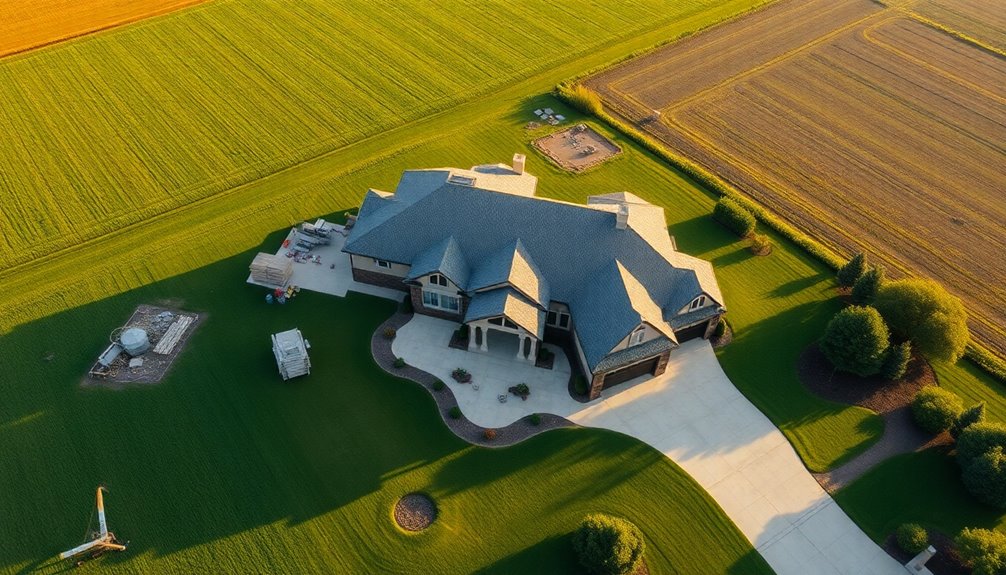
When it comes to building ranch homes, you'll notice that foundation and roofing expenses can add up quickly.
The larger footprint requires more materials and labor, making it essential to factor in those costs as you plan.
Plus, with the utility installation challenges that come with a single-story layout, your overall budget may need some adjustments.
Foundation and Roofing Expenses
Ranch homes often come with higher foundation and roofing expenses due to their unique design. Their sprawling single-story layout necessitates a larger foundation, which drives up material and labor costs. Additionally, the extensive roofing area requires more materials, adding about 10% to overall construction expenses compared to multi-story homes.
| Aspect | Cost Increase (%) | Explanation |
|---|---|---|
| Foundation | 15% | Larger area requires more materials |
| Roofing | 10% | More surface area means higher costs |
| Plumbing/Electrical | 20% | Longer runs lead to increased expenses |
These factors, along with land acquisition and customization, contribute greatly to the overall price of ranch homes.
Material and Labor Costs
The unique design of ranch homes greatly impacts material and labor costs during construction.
With their larger footprint, you'll find that material costs increase by about 10% compared to multi-story homes. This expansive layout requires more roofing, foundations, and extensive plumbing and electrical installations, all of which drive up expenses.
Labor costs can also be higher, as specialized craftsmanship is needed to accommodate the distinct architectural features of ranch homes.
Additionally, if you choose high-quality materials, like energy-efficient windows and upgraded appliances, you'll see further increases in construction costs.
Finally, the larger lot sizes often required for ranch homes lead to higher land acquisition costs, ultimately elevating the overall price of the property.
Utility Installation Challenges
While constructing a ranch home can be appealing for its spacious layout, utility installation often presents substantial challenges.
The expansive single-story design requires larger foundations and roofing, which drives up construction costs. You'll notice that plumbing and electrical systems need to stretch across a wider area, leading to more extensive installations.
Longer runs for these lines increase both labor and material expenses, adding to your total costs. Additionally, designing an efficient HVAC system for the open layout can complicate matters and inflate prices further.
Land Requirements and Pricing
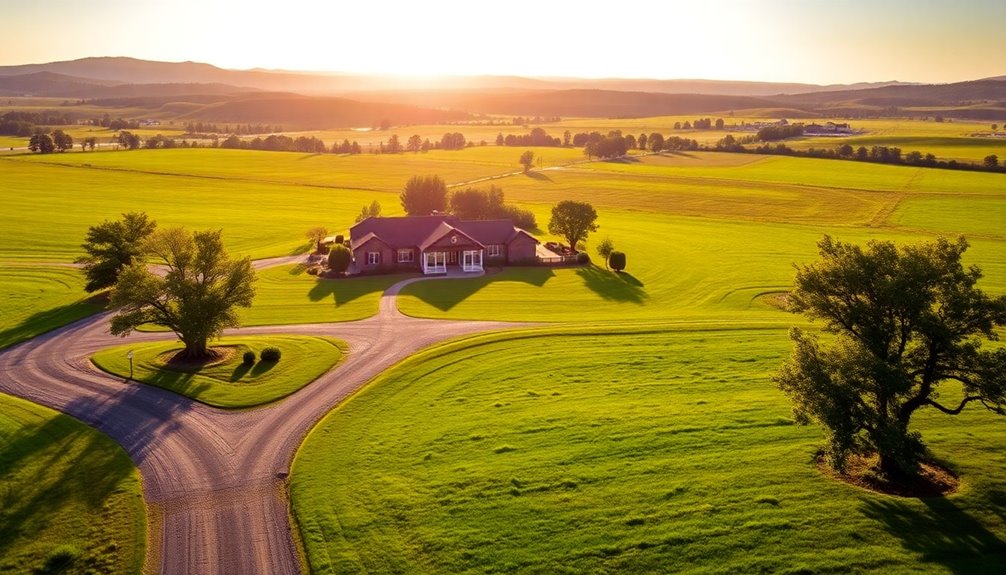
Since ranch homes require larger lot sizes, you'll often find that land costs markedly impact the overall price of the property. This necessity for more land can greatly raise the price tag on these homes, especially in urban areas.
Here are some factors to reflect on:
- Larger foundations and roofing increase construction costs per square foot.
- Limited availability of land drives up demand and prices.
- Premium land prices in desirable regions add to overall affordability issues.
- The sprawling layout often competes for space with multi-story homes.
- In areas with high land value, ranch-style homes become less accessible for buyers.
Understanding these land requirements helps you grasp why ranch homes typically come at a higher price.
Demand in Prime Locations
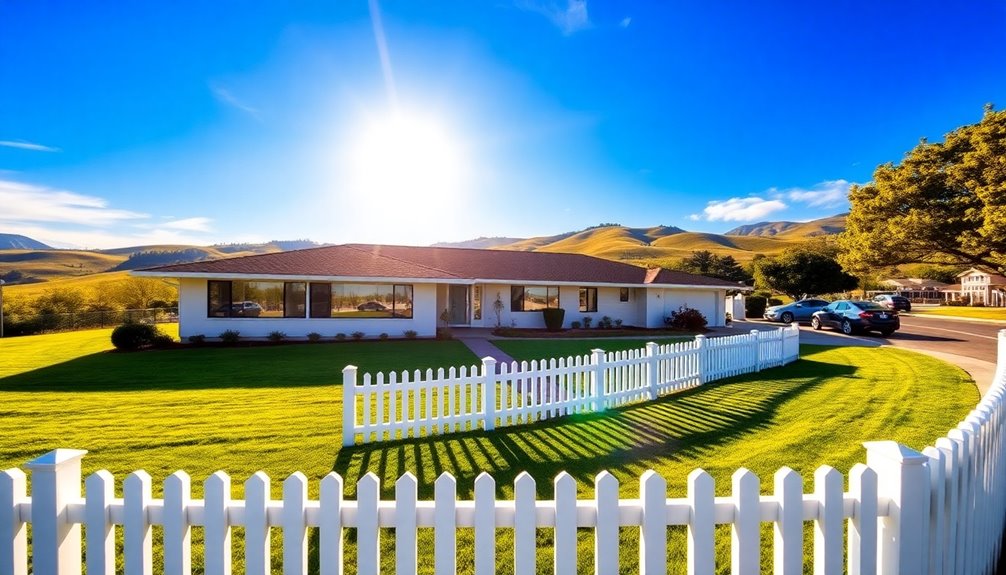
As buyers seek out homes in prime locations, the demand for ranch-style properties has surged, thanks to their appeal for single-story living. This increased interest often leads to competitive bidding, driving up prices in sought-after neighborhoods. Ranch homes generally require larger lot sizes, which adds to the overall cost, especially in areas where land is scarce.
| Factor | Impact on Price |
|---|---|
| Lot Size | Higher property costs |
| Demand | Increased competition |
| Proximity to Amenities | Enhanced desirability |
| Demographics | Broader buyer interest |
In regions like Los Angeles, limited inventory further inflates ranch homes' prices, making them even more desirable and costly for potential buyers.
Upgraded Amenities and Their Impact
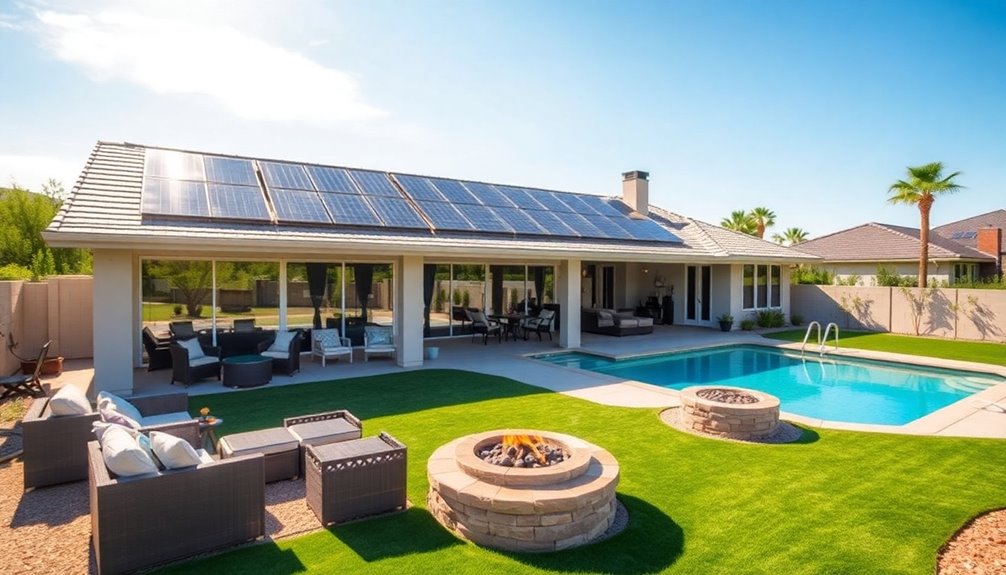
The rising demand for ranch homes in prime locations isn't just about their layout; upgraded amenities play a significant role in their market value.
When you consider home design, the inclusion of high-end features can elevate the price substantially. Here are some key upgrades that impact costs:
- Gourmet kitchens with premium appliances
- Spa-like bathrooms featuring luxury finishes
- Outdoor living spaces, like expansive patios
- Smart home technologies for convenience
- Advanced HVAC systems for comfort
These upgraded amenities not only enhance your living experience but also contribute to a home's desirability and resale value.
Investing in quality craftsmanship and unique designs further reflects in higher property prices, making ranch homes a more valuable choice for buyers.
Energy Efficiency Considerations
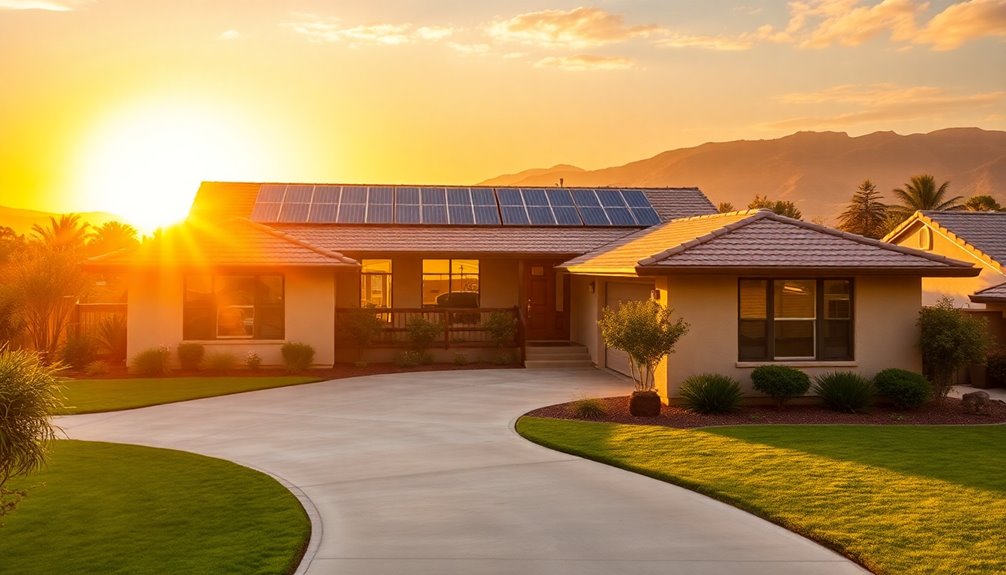
When considering a ranch home, energy efficiency should be a top priority, especially since their sprawling layouts can lead to higher heating and cooling costs. The larger foundation and roofing increase initial construction costs, which might be reflected in the purchase price.
Opting for energy-efficient features like high-quality insulation and energy-efficient windows can help reduce long-term utility expenses, but these upgrades often come with higher upfront costs. Without these technologies, you could face higher monthly utility bills, becoming a financial burden over time.
Fortunately, the trend toward sustainable building is encouraging builders to invest in energy-efficient materials and appliances. While this may raise purchase prices initially, it can lead to significant savings and comfort in the long run. Additionally, integrating modern heat pumps can enhance overall indoor air quality and contribute to energy savings.
Market Trends Influencing Prices
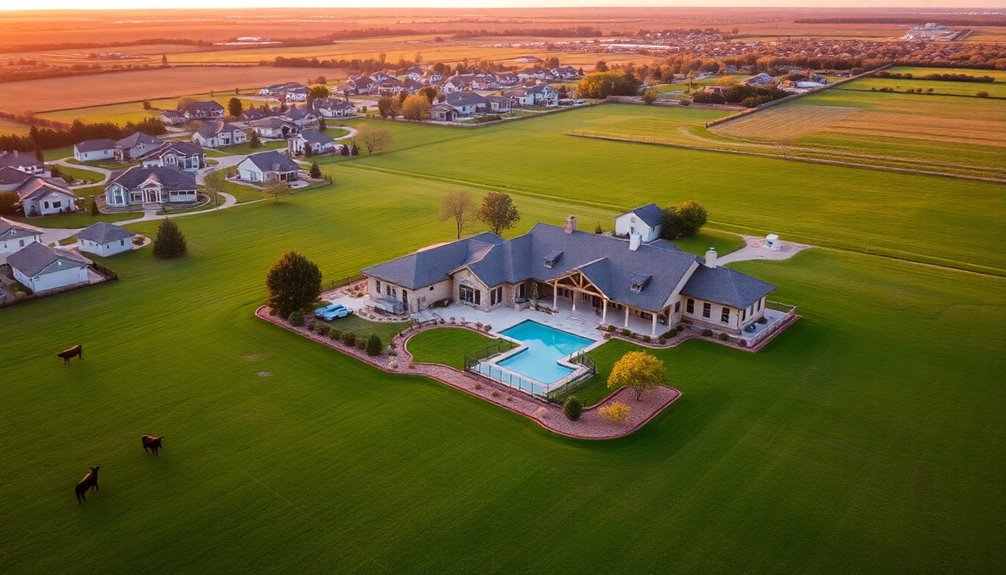
While ranch homes have been a popular choice since around 2010, their rising prices are largely due to a combination of increasing demand and limited availability.
As more buyers seek single-level living, the market value of these homes continues to climb. Here are some key trends influencing prices:
- Increased demand for aging-in-place options
- Limited inventory in urban areas, intensifying competition
- Finished basements boosting overall home appeal and value
- Larger lot sizes required for construction, raising costs
- Shift in buyer preferences towards functional living spaces
These factors collectively contribute to the premium prices you see for ranch homes today, making them a sought-after investment in the current real estate landscape.
Long-Term Value and Investment Potential
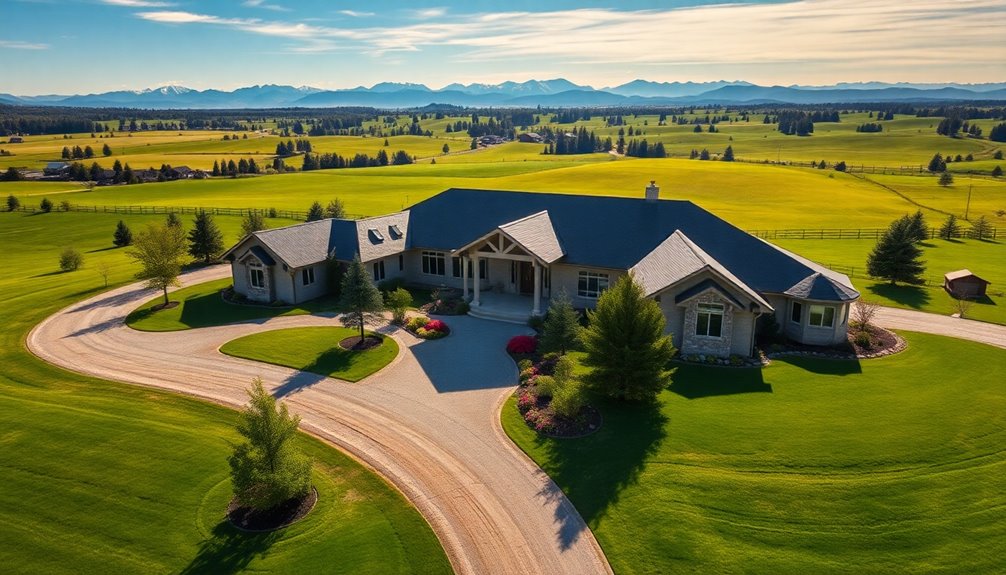
Investing in a ranch home can be a smart choice, especially given their quality construction and enduring appeal. These homes are often built with higher-quality materials, boosting their long-term value.
The single-story layout attracts older adults, maintaining strong demand and stable property values over time. Well-constructed ranch homes with modern amenities typically perform better in the resale market, retaining value more effectively than many other styles.
With the growing trend toward single-story living among families and retirees, the investment potential for ranch homes looks promising. Additionally, larger outdoor spaces enhance their appeal, contributing to higher resale prices and overall value.
In short, ranch homes can be a wise long-term investment.
Frequently Asked Questions
Why Do Ranch Homes Cost More?
Ranch homes typically cost more due to their larger size and single-story design.
You'll find that these homes require more materials for foundations and roofing, which drives up expenses. Additionally, the extensive plumbing and electrical work adds to the overall cost.
If you're looking in urban areas, you'll notice higher land prices for the larger lots needed.
All these factors combine to make ranch homes pricier than their multi-story counterparts.
What Are the Disadvantages of Ranch Style Homes?
Did you know that ranch homes can have heating and cooling bills up to 30% higher than two-story homes?
While the single-story layout offers convenience, you may find privacy lacking due to open floor plans, making noise travel easily.
Additionally, the larger footprint can lead to increased land costs.
If you're considering customization, remember that those enhancements can add considerably to your initial investment, making budgeting essential for your ranch-style dream home.
Do Ranches Have Better Resale Value?
Yes, ranch homes generally have better resale value.
Their single-level living appeals to various buyers, including families and older adults.
You'll find that well-constructed ranches with modern amenities retain their value better.
The demand for outdoor spaces and larger yards also makes these homes attractive.
Plus, the trend of aging in place boosts their market appeal, ensuring you're likely to see a good return if you decide to sell.
What Three Factors Influence the Price of Housing?
Imagine standing in a neighborhood where homes stretch luxuriously across the land.
The price of housing can be influenced by three key factors: location, where desirable areas command higher costs; construction materials, which can vary widely in price; and market demand, which fluctuates based on buyer preferences.
These elements intertwine, shaping what you'll pay for your dream home.
Keep them in mind as you explore your housing options!
Conclusion
To summarize, while you might think ranch homes are pricier than other styles, their unique features and benefits make them worth the investment. The appeal of single-story living, combined with their upgraded amenities and energy efficiency, often leads to higher demand. You're not just buying a home; you're securing long-term value and comfort. So, if you're considering a ranch home, remember that the initial cost could pay off considerably in the years to come.
